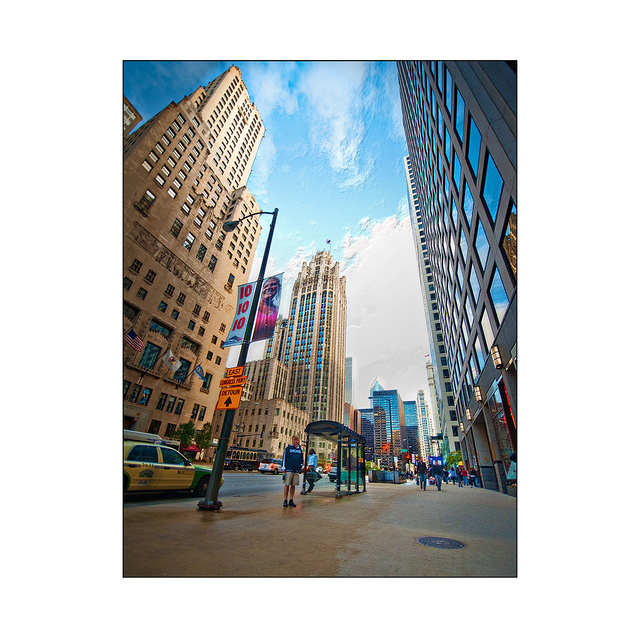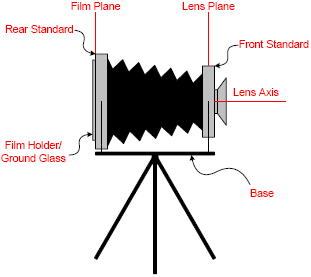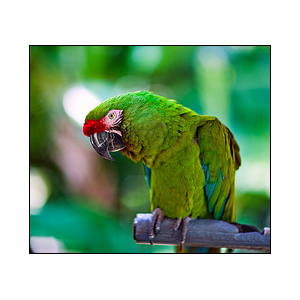 |
 |
 |
  |
 |
|||||||
Assignment 6: Night Photography (Levoy)
| Assignment Day | March 29, 2011 (Thursday) There will be one-two assignments a week from now on. |
| Due Date | April 5 - Minium 6 photos posted to our group. |
This assignement is from Marc Levoy's Stanford Digital Photography Class and it also relates to Prof. Michael Covington's Astro Phototogaphy.
Motivation:
Taking photographs at night presents unique challenges. Exposure times must be very long, so hand-holding the camera is out of the question. However, with a steady place to rest the camera (which need not be a tripod), and a long exposure, the light gathering ability of your camera can greatly exceed the human eye, allowing you to capture a shot of something you could not normally see, such as a forest at night, a faraway galaxy, or even a rainbow cast by moonlight.
Requirements
- [1 Photo] Requirement 1: An Outdoor Night Scene of Nature
Head outside, find somewhere stable to rest your camera, and photograph a picturesque natural night scene. We want to see absolutely no motion blur due to camera movement in your shot. You may wish to use the self-timer mode on your camera to avoid the problem of moving the camera when you press the shutter button. As this is a night scene, your exposure time should be at least one or two seconds. For this nature requirement, you may will want to find a landscape illuminated by the sky and/or moon and/or artificial lights, but the subject should be nature (and not artificial objects). It's okay if there is an incidental amount of manmade stuff in your scene, but your photograph should be all or almost all natural, and the subject should clearly be nature.
- [1 Photo]: Requirement 2: An Outdoor Night Scene of Architecture
As in requirement 1, take a night photograph of at least one or two seconds exposure with absolutely no motion blur. But this time your subject should be primarily architecture. Example subjects include bridges, city streets, buildings, cityscapes, etc. Reminder: your photo should be well exposed, so we can see detail in the buildings and other objects -- don't make it so dark that all we can see are the lights.
- [1 Photo]: Requirement 3: Painting with Light
Take a long-exposure photo in which you use a light source as if it were a painter's brush. You should move the light around to create the scene you want over the course of the exposure. You can do this by making the light source the subject, and moving it around as in our example, or by pointing the light at the parts of the scene you wish to be illuminated over the course of the exposure. One popular way to do this is to walk around in your scene during the exposure with a hand-held camera flash, firing it in places you would like to be illuminated.
- [2 Photos]: Requirement 4: Light and Color
Find a colored object, and a strongly colored light source (such as an LED), such that the color of the object as photographed by your digital camera looks dramatically different under that light source versus under normal lighting. Submit two photographs demonstrating this effect - one under normal lighting and one under colored lighting. Include in each photograph a white (neutral-colored) object, as a comparison.To make the two photographs comparable, turn off auto white balance on your camera. In your comments, describe the object and the colored light. Remember that this effect will depend not only on the apparent colors of the objects and light, but on their underlying spectra. Since you don't know these spectra, you may have to experiment a bit to find a good example. The effect will be strongest when using a light source with a narrow spectrum, such as the sodium lamps you find in parking lots or the LEDs on your electronics.
- [1 Photo] Requirement 5: Color as a pictorial
Take a photo that is primarily monochromatic (i.e. grayscale or a single desaturated color like grayish-brown) that has one or more elements sharing a single common bright color. For example, a black-and-white photo with three red apples. You can achieve the effect with any combination of setup and Photoshop, meaning that your original photo doesn't have to satisfy the requirement as long as you use Photoshop to selectively saturate everything that's not your color accent. Be creative here, and have fun with this one! Make sure you state in your comments how you set up the shot and what, if anything, you did in Photoshop to achieve the effect. (You don't need to upload the pre-Photoshop shot, and again, you don't necessarily even have to use Photoshop if you can achieve the effect without it.)
Upload your photos and add comments.
Upload your photos (minimum of 6, 1-2 for each requirement) to flickr in a set titled "Night and Color". It is important that you create a set for easy grading. You also need to submit a minumum 6 photos to our group.
As usual add comments below each photo explaining what relevant camera settings you used and why, any image processing done to the photograph afterwards, and most importantly, which requirement the photo covers.
Comment on other's photos.
As a courtesy please leave comments for 3-5 people in the class.
Example Solution
Here is an example solution from the Marc Levoy's Stanford Class example solution to give you an idea of pictures that satisfy the requirements. You don't have to meet the assignment requirements in the same way as they did - surprise us!Note that thte work you submit must be done by you specifically for the course, so no old photos. However, you may submit 'additional' photos beyond the requirments that are old shots if you like to share.
Grading
As usual, we will assign grades based on whether you met the requirements of the assignment. For each requirement, you'll be given a check for meeting the requirement, check-minus for not quite meeting the requirement, or check-plus if you do something spectacular that makes your grader's jaw drop.
Practice technical questions
These questions are for your own educational benefit; you do not need to submit your answers - but they may be on the final or on a quiz. Some of the topics have not been covered yet! But they will be.
As background for question 1, it will help to read over this paper about color vision in horses: paper (click on "PDF" under Full Text to read the paper). You don't need to read it closely, and there are lots of terms from biology which we don't expect you to know, but you should understand the figures.
Horses are dichromats. They have two different types of color receptors with two different sensitivity functions. Roughly speaking, Figure 1 shows the spectral sensitivity of horses for one type of receptor, Figure 2 shows spectral sensitivity for both types of receptors, Figure 3 is a simulation of what Newton's color wheel looks like to a horse, and Figure 4 is a simulation of what some real scenes look like to a horse.
- Problem 1a. True or False: Any two objects that appear the same color to horses will also appear the same to humans.
- Problem 1b. True or False: Any two objects that appear the same color to humans (metamers) will also appear the same to horses.
- Problem 1c. True or False: Ignoring brightness, a horse can only see two different colors, while a human can see an infinite number of colors.
- Problem 1d. True or False: If you take a color photograph of a scene, and show it to a horse on your laptop screen, will it look like the real scene to the horse? That is, for the horse, will the colors of different objects in the photograph appear to match the colors of those objects in reality?
- Problem 2: Camera Color Sensitivity The pixels in most digital cameras are covered with red, green, or blue filters, arranged in some pattern. If one replaced some filters of each color with yellow filters, what would happen? (check all the apply):
- a) The color measurement space of the camera, akin to the color response space of an animal, would change from three-dimensional to four-dimensional
- b) The camera would be able to see pure wavelengths not lying on the visible spectrum.
- c) The camera would be more sensitive to dim yellow objects.
- d) The camera's ability to capture color would not be affected.
- Problem 3: Color and the Electromagnetic Spectrum Select those colors that are not reproducible with a single wavelength of light:
- a) red
- b) yellow
- c) blue
- d) magenta
- e) white
- f) green
- g) cyan
- h) pink
- i) brown
- Problem 4: Addiditive vs. Subtractive Color. True or False: The transmitted light through color filters in sequence combines by multiplying the transmittance spectra of each filter wavelength-by-wavelength.
- Problem 5: Addiditive vs. Subtractive Color. True or False: Superimposed colored lights or small adjacent dots combine additively - by adding their spectra wavelength-by-wavelength.
- Problem 6: Addiditive vs. Subtractive Color. True or False: Since printers operate in the subtractive color regime, they must use the CMYK primaries.